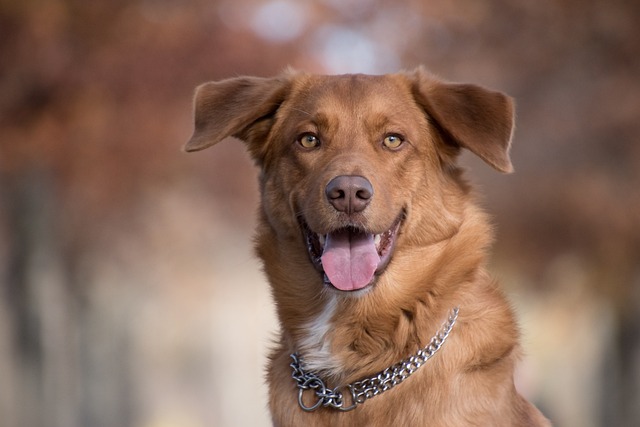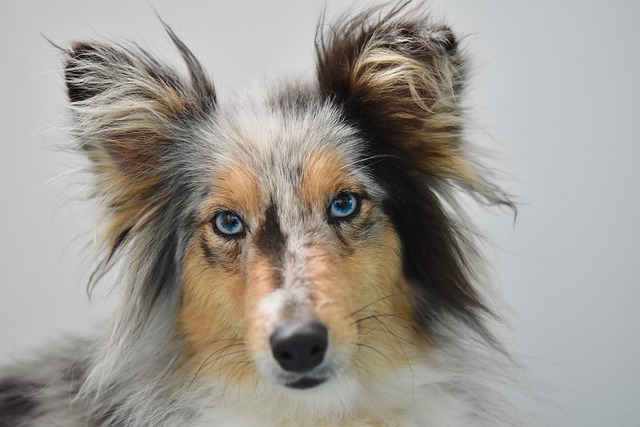Dogs are like the warm sun in winter, filling our lives with pure love and loyalty. Every time we come home and see them wagging their tails happily to greet us, our tiredness disappears instantly. However, when illness approaches quietly, worry and unease will grip our hearts tightly. Kennel cough, a common disease, makes many dog owners anxious. Mastering the methods to determine whether a dog has kennel cough is crucial for safeguarding their health.
Coughing is the most typical symptom of kennel cough. The cough sound of a dog is highly recognizable, mostly a dry cough that sounds like a sharp "kaka" sound, similar to a goose's honk. This kind of cough often occurs suddenly without warning and is relatively frequent. In the quiet night, this abrupt cough sound is particularly clear, and every cough is like a heavy hammer striking the owner's heart. When a dog coughs, it often lowers its front limbs to the ground, and its body shakes violently. In severe cases, it may even cause dry heaving, but nothing comes out. Watching them in such discomfort, we wish we could bear the pain for them, and our hearts are filled with distress and anxiety. From a medical perspective, kennel cough is mainly caused by infections of various pathogens, such as canine parainfluenza virus and Bordetella bronchiseptica. These pathogens invade the respiratory tract, causing inflammation of the tracheal and bronchial mucosa, thus stimulating the dog to produce a cough reflex.
Frequent sneezing is also an important signal. Under normal circumstances, it is normal for a dog to sneeze occasionally. However, if you notice that the frequency of its sneezing has increased significantly, much more than usual, you need to be vigilant. This is because the respiratory tract inflammation caused by kennel cough irritates the nasal mucosa, prompting the dog to sneeze frequently. Every sneeze is like the dog sending us a silent distress signal, reminding us that there is something wrong with its body.
The change in the mental state is a key basis for judging whether a dog is ill. A healthy dog is always full of vitality, curious about everything around it, and excited to approach at the slightest sound. But once it gets kennel cough, it seems as if its vitality has been drained, and it becomes listless. Its originally bright and lively eyes become dull, and its tail no longer stands high but droops weakly. It loses interest in its favorite toys, games, and walks. The little guy that used to jump up and down with excitement at the thought of going out now lies lazily in the corner all day long, reluctant to move. This huge contrast is likely a sign of physical discomfort, and the discomfort brought by kennel cough is enough to make the dog lose its former vitality. This is because the disease causes an increase in the dog's body's energy consumption, and at the same time, the toxins produced by the inflammation also affect the nervous system, making the dog feel tired and weak.

The change in appetite should not be ignored either. Dogs with kennel cough often experience a decrease in appetite. They just perfunctorily sniff the food they used to like and then turn away, no longer gobbling it up as they used to. This is because the cough and physical discomfort seriously affect their desire to eat. The pain in the throat and the difficulty in breathing make it very difficult for the dog to eat. Just imagine that even the simple matter of eating has become so painful for the dog. How can we not feel distressed?
Fever is also a symptom that may accompany kennel cough. We can initially judge by touching the dog's ears and paw pads. Under normal circumstances, the dog's ears and paw pads feel warm. If they feel much hotter than usual, we need to be vigilant and use a thermometer to measure its body temperature. The normal body temperature of a dog is between 37.5°C and 38.5°C. Once it exceeds 39°C, it is very likely that the body is fighting against the disease. The inflammation caused by kennel cough stimulates the immune system, prompting the body to produce a fever response to fight against the pathogens.
A runny nose is a symptom that is easily overlooked. At first, the dog may only have a small amount of clear nasal discharge, which is not easy to notice. But as the condition progresses, the nasal discharge will gradually increase, and the color may also turn light yellow. This is a sign that the respiratory tract inflammation is getting worse, and excessive nasal discharge can even affect the dog's breathing. Seeing the dog with nasal discharge on its nose and making a "huffing" sound when breathing, our hearts are filled with worry.
It should be noted that the symptoms of kennel cough are very similar to those of respiratory diseases such as colds and pneumonia. Therefore, when you find that your dog has the above symptoms, never make a self-judgment or use medicine on your own. The best thing to do is to take the dog to see a veterinarian in a timely manner. The veterinarian will conduct professional examinations, such as auscultation, carefully listening to the sounds of the dog's lungs and trachea to determine if there are abnormal breath sounds; X-ray examinations may also be carried out to check if there is inflammation or other lesions in the lungs; and blood tests can help determine whether there is an infection in the dog's body and the type of infection. Only through these professional examinations can an accurate diagnosis be made and an effective treatment plan be obtained.
As dog owners, we bear the heavy responsibility of safeguarding their health. Every subtle change may be a signal that something is wrong with the dog's health. Although kennel cough is not a fatal disease, if it is not treated in a timely manner, it will make the dog suffer a lot and may even lead to more serious complications, such as bronchitis and pneumonia. Let's pay attention to the dog's health with love and care at all times and accompany them through every happy day. When the dog is healthy and happy, our lives will also be more wonderful because of their presence.






